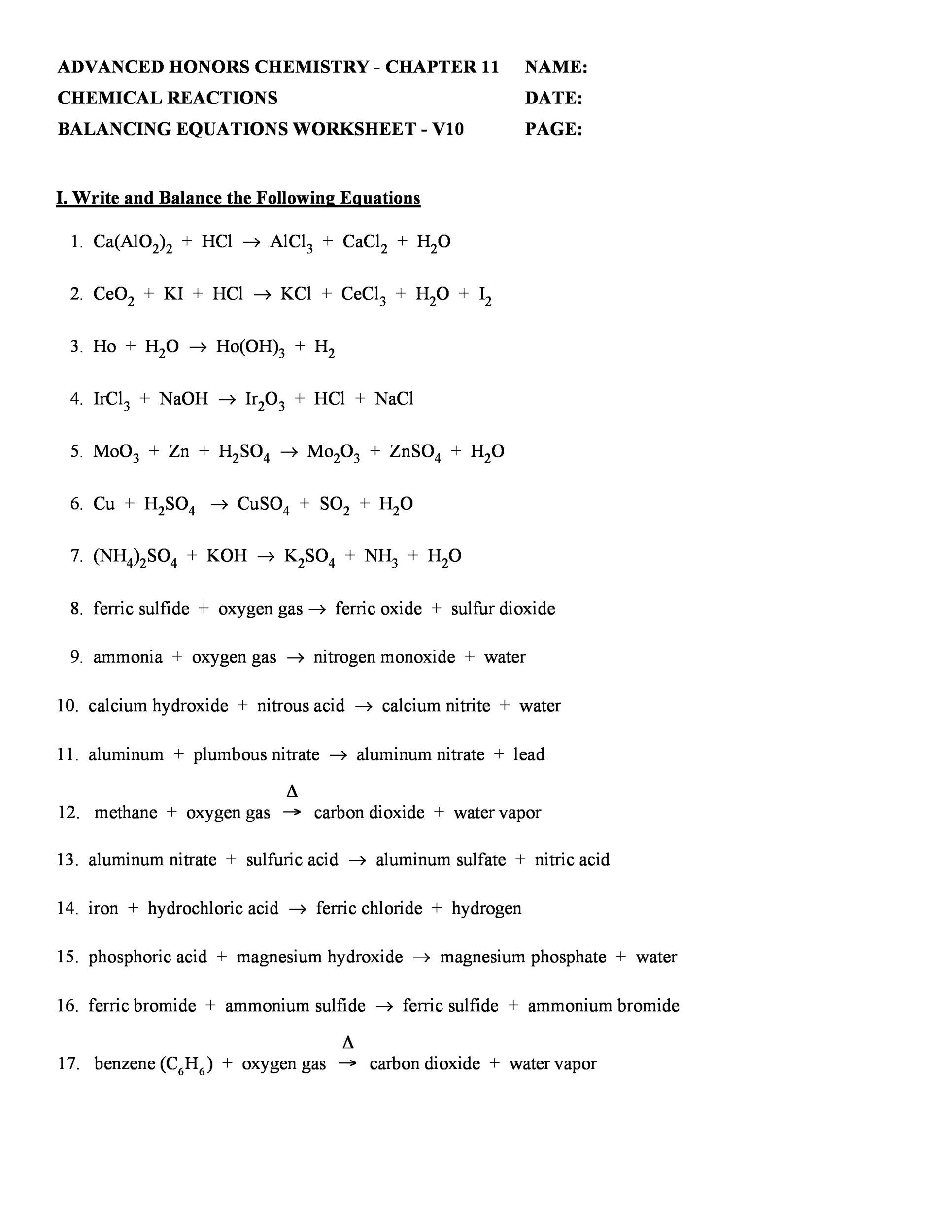When it comes to studying chemistry, one of the fundamental concepts that students need to grasp is balancing chemical equations. This process involves ensuring that the number of atoms of each element on the reactant side is equal to the number of atoms on the product side. To help students practice this skill, teachers often provide balanced equations worksheets. These worksheets contain a series of chemical equations that students must balance by adjusting coefficients.
Here are some sample answers to a balanced equations worksheet:
1. H₂ + O₂ -> H₂O
2H₂ + O₂ -> 2H₂O
2. NaCl + AgNO₃ -> AgCl + NaNO₃
NaCl + AgNO₃ -> AgCl + NaNO₃
3. Fe + O₂ -> Fe₂O₃
4Fe + 3O₂ -> 2Fe₂O₃
4. C₆H₁₂O₆ -> CO₂ + H₂O
C₆H₁₂O₆ -> 6CO₂ + 6H₂O
5. NH₄Cl -> NH₃ + HCl
NH₄Cl -> NH₃ + HCl
By practicing with these types of equations and their answers, students can become more proficient in balancing chemical equations and understanding the principles behind them.
One key strategy for balancing equations is to start with the most complex molecule and work your way down to the simplest. This can help students keep track of the changes in the number of atoms on each side of the equation. It’s also important to remember that the subscripts in a chemical formula cannot be changed when balancing equations, only the coefficients in front of the formulas.
Additionally, students should pay close attention to polyatomic ions, as these groups of atoms behave as a single unit in a chemical equation. By treating them as a single entity, students can more easily balance equations that involve polyatomic ions.
In conclusion, balanced equations worksheets are a valuable tool for students to practice and master the skill of balancing chemical equations. By working through a variety of equations and checking their answers, students can build confidence in their ability to manipulate chemical formulas and understand the principles of chemical reactions.
